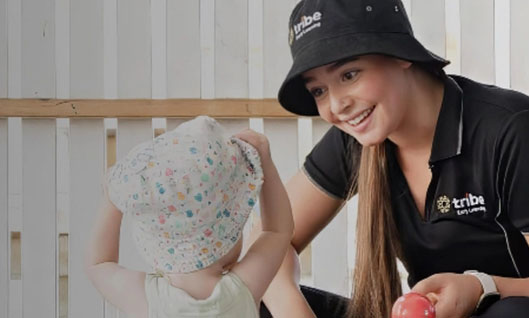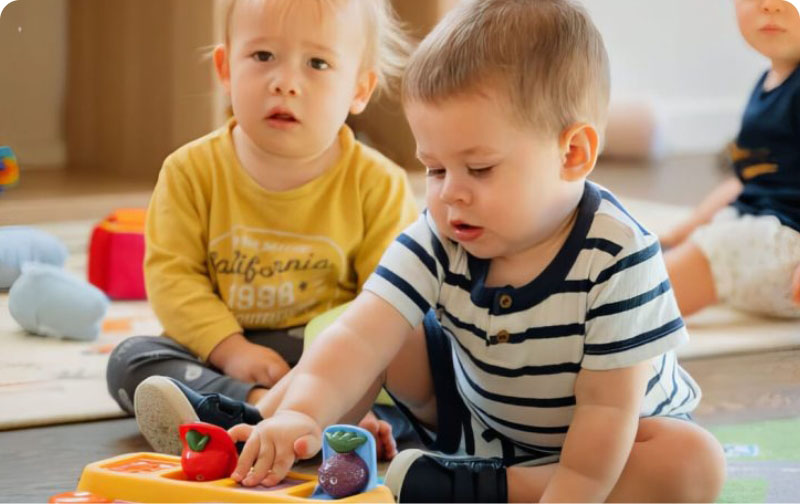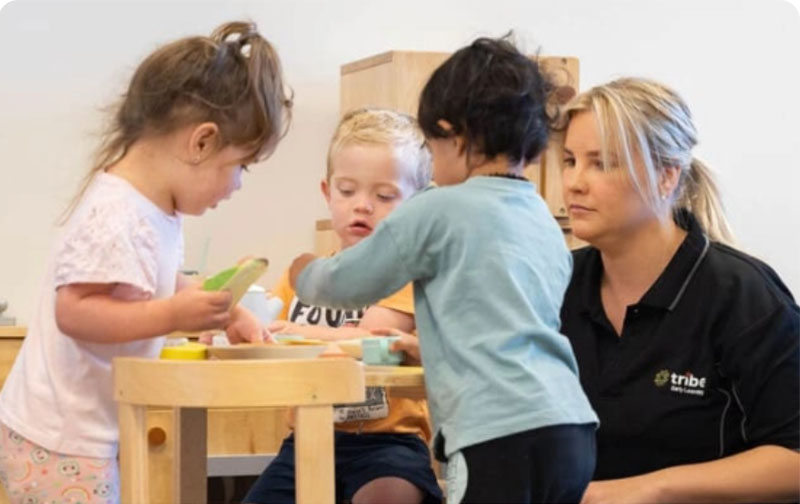Every child embarks on an exciting journey of self-discovery and learning from opening their eyes to the world. In this quest for knowledge, one fundamental tool often needs to be emphasised – the ability to read. As parents and educators, we can enhance our children’s curiosity and intellectual development by nurturing their love for reading from an early age. In this fascinating journey, each word they read becomes a stepping stone toward a world of enlightenment.
Laying the Groundwork for Lifelong Learning through Early Literacy
Early literacy plays a significant role in a child’s academic success and overall development. By introducing our children to the magical world of books, we equip them with tools to enhance their cognitive abilities, foster creativity, and spur critical thinking. With reading, every page they turn opens up a new realm of possibilities, thus instilling a deep-rooted love for lifelong learning.
Creating an environment conducive to reading is paramount in stimulating a child’s interest in books. A reading-rich space can be as simple as a cozy corner with various books within the child’s reach. Encourage them to explore these books freely, and soon you will find them immersed in the enchanting world of stories.
The influence of a well-nurtured reading habit extends beyond the confines of the home or classroom. It paves the way for children to become informed and engaged citizens, setting the stage for their holistic development and a fulfilling future.
Crafting a Literacy-Rich Environment for Young Minds
A child’s surroundings play a critical role in shaping their reading habits. Creating a reading-friendly environment at home and school is essential to stimulate their curiosity, encourage exploration, and foster a deep love for reading. Such an environment, rich in diverse reading materials, supports language development and nurtures a love for reading that will likely last a lifetime.
To achieve this literacy-rich environment, provide a variety of books that are easily accessible in different areas of the home or classroom. Consider creating a reading nook with comfortable seating, offering a quiet and comfortable reading space to help children focus on their books. Regularly rotating the books available in this space can ensure that the children always have something new and exciting to look forward to.
This proactive approach not only cultivates a love for reading but also exposes children to different genres and writing styles. It aids in developing their literacy skills and shapes their understanding of the world. Creating such a nurturing environment lays the foundation for a lifetime of learning and growth.
Selecting Developmentally Appropriate Books for Young Readers
Choosing books that align with a child’s developmental stage is essential to engage their interest and foster a love for reading. A well-chosen book educates and entertains, making reading an enjoyable and anticipated activity. It sparks curiosity, stimulates the imagination, and encourages children to ask questions, fostering their learning process.
Books with bright, colourful pictures, simple words, and repetitive phrases are ideal in the early stages. These books often combine visual and linguistic elements that captivate the young mind, making them perfect for introducing reading. As they grow older, they gradually introduce books with more complex narratives, characters, and themes that align with their evolving cognitive abilities.
Reading should be an enjoyable activity, not a challenging task. Hence, ensuring that the books are simple enough for the child is vital. The former may bore them, while the latter could discourage them from reading. Therefore, selecting developmentally appropriate books is key to maintaining their interest and nurturing their love for reading.
The Magic of Bedtime Stories: Nurturing Reading Habits and Bonding
Bedtime stories form an integral part of many children’s daily routines. This cherished ritual creates bonding opportunities for parents and children, facilitating open communication and emotional connection. It also establishes a consistent reading habit, reinforcing the importance of reading in the child’s life.
Parents can introduce their children to various characters, cultures, and scenarios through these stories. They serve as a platform for teaching important life lessons, cultivating empathy, and promoting understanding of the world around them. Over time, children often associate reading with these positive experiences, further ingraining the habit.
Reading a bedtime story also sets a calm and relaxing atmosphere, preparing children for a good night’s sleep. It signals the end of the day and helps them transition from their active daytime routine to a peaceful nighttime rest. This ritual thus serves a dual purpose – nurturing the love for reading while establishing a healthy bedtime routine.
Encouraging Independent Reading and Exploration
Independent reading is vital in nurturing a love for reading and enhancing literacy skills. It fosters self-confidence and promotes a sense of achievement when children can read a book independently. It also enables children to explore topics that interest them, which can motivate them to read more.
As parents and educators, we can support independent reading by providing diverse books and allowing children the freedom to choose what they want to read. This freedom not only respects their interests but also makes reading a more enjoyable and engaging activity. It empowers them to explore independently, nurturing their innate curiosity and encouraging their love for reading.
Encouraging independent reading also promotes critical thinking and comprehension skills. As children read independently, they form their interpretations of the text. They learn to question, analyze, and reflect on the content, skills that are essential for their cognitive development and academic success.
Making Reading Fun through Interactive Strategies
Interactive reading strategies can significantly enhance children’s engagement and comprehension. These strategies transform reading from a passive activity into an engaging and dynamic experience. They foster active participation, promote comprehension, and make reading an enjoyable experience.
One effective strategy is to ask open-ended questions about the story. This stimulates children’s critical thinking and encourages them to express their thoughts and feelings. It transforms reading into an interactive dialogue, enhancing their understanding of the text and making the experience more engaging.
Another strategy is to use different voices for different characters or incorporate sound effects. This makes the story more lively and interesting, capturing children’s attention and making them look forward to reading sessions. Using props or related activities, such as crafts or role-play, can enhance the reading experience, making it fun and memorable.
Diversifying Children’s Literature: An Expedition into Multicultural and Inclusive Books
Introducing diversity in children’s literature is a powerful way to expose them to various cultures, perspectives, and experiences. Multicultural and inclusive books can broaden their understanding of the world, promoting empathy, acceptance, and inclusivity. Such books serve as windows into different cultures, enabling children to appreciate diversity and learn about different ways of life.
Selecting books that portray characters from various backgrounds, races, and abilities can help children understand that people’s differences make them unique and special. These books can also help children identify with characters who share similar experiences or challenges, offering comfort and validation. They learn that although we may look different or come from different places, we share common human experiences and emotions.
Additionally, diverse literature can stimulate tolerance, equality, and social justice discussions. Such conversations can instil important values in children, shaping them into informed and empathetic individuals. Thus, fostering diversity in children’s literature is not merely about expanding their literary horizons but about nurturing a comprehensive worldview.
Libraries and Community Programs: Igniting a Love for Reading
Libraries and community programs play a crucial role in fostering a love for reading among children. They offer extensive books and resources catering to every child’s interests, reading levels, and learning needs. Regular visits to the library can become an adventure, with every trip unveiling new books to explore.
Libraries often host storytime sessions, book clubs, and reading programs that provide interactive and social reading experiences. These programs can make reading a fun and exciting activity, encouraging children to read more. They also provide opportunities for children to engage with their peers, discuss their favourite books, and broaden their perspectives.
Community-based reading programs, often collaborating with schools and local organizations, can also instil a love for reading. They offer activities such as read-a-thons, author meet-and-greets, and storytelling festivals. These programs make reading a community endeavour, fostering a culture of reading among children.
Enhancing Reading Experiences Through Technology
The advent of technology has revolutionised many aspects of our lives, including how we approach reading. When used mindfully, technology can be a valuable tool to enhance reading experiences and cultivate a love for reading. E-books, interactive reading apps, and audiobooks can make reading more accessible and engaging for today’s digital natives.
Digital platforms offer a plethora of e-books that encompass various genres, themes, and reading levels. They allow children to explore a wide range of books at their fingertips. Interactive reading apps can also make reading more engaging by incorporating multimedia elements like animations, sound effects, and interactive quizzes.
Audiobooks provide a unique reading experience where children can listen to stories narrated by skilled voice actors. They can bring stories to life, capturing children’s interest and imagination. Despite the benefits, balancing screen time with traditional book reading is essential to maintain healthy digital habits and ensure that children still appreciate the joy of flipping through physical pages.
The Transformative Power of Reading Aloud
Reading aloud to children profoundly affects their language development and comprehension skills. It exposes them to rich and varied language, broadens their vocabulary, and enhances their listening skills. The shared experience of reading aloud can stimulate their imagination, promote empathy, and foster a love for literature.
When children hear adults read aloud, they learn to articulate words, modulate their voice, and express emotions through tone and inflection. This can significantly improve their speech and communication skills. Reading aloud also allows one to discuss the story, ask questions, and make predictions, promoting critical thinking and comprehension.
Furthermore, reading aloud creates a bond between the reader and the child. It turns reading into a social and interactive experience, filling it with shared laughter, suspense, and learning. This shared joy in storytelling helps children associate reading with pleasure, fostering a lifelong love for books. Thus, reading aloud can serve as a stepping stone toward nurturing avid, enthusiastic readers.
From an early age, nurturing a love for reading sets children on a path to lifelong learning. It empowers them to explore the world, fosters intellectual development, and enhances comprehension skills. Whether it’s through choosing age-appropriate books, creating a reading-rich environment, diversifying literature, or harnessing the power of technology, parents and educators play an instrumental role in cultivating this love for reading. By doing so, we equip our children with the tools for success and inspire them to become lifelong learners. It’s a joyous journey filled with exciting characters, captivating narratives, and enchanting worlds, all nestled within the pages of a book.











